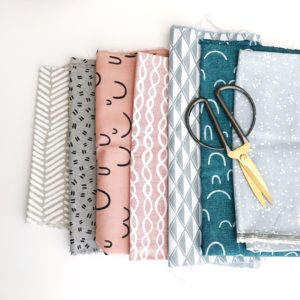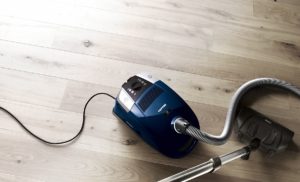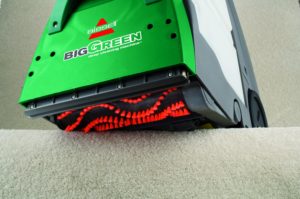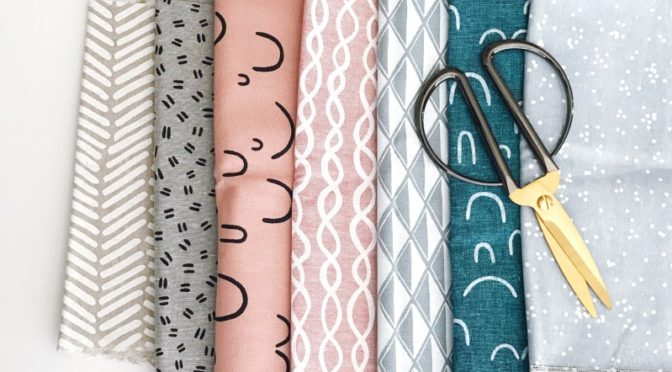
When buying a carpet, you’re going to get good at making decisions, because you’re going to have a lot of choices laid out in front of you. Fortunately, we’ve written guides to most of them, and we’ll continue to do so as long as we get questions from our readers. Today we’re going to help you figure out the pros and cons of choosing natural or synthetic fibers for whichever carpet you make a part of your home. By the end of the article, you still might not know exactly what you want, but you’ll at least have a better understanding of what you’re choosing.
What are synthetic and natural fibers, and what are common examples of each?
Every carpet fiber, no matter how exotic, is either going to be natural or synthetic in nature. Synthetic carpet fibers are those that are made in factories by machines; they don’t occur in nature. Most are essentially made from plastic, which itself is made from oil. While oil is technically a natural material, the degree of processing required to turn a dead dinosaur into a carpet fiber leads them to be classified as synthetic. The style is popular; the overwhelming majority of carpets sold in the US and Canada are synthetic. In order of invention, the four primary types are nylon, polyester, olefin, or polypropylene, and triexta, which is the new kid on the synthetic block.
Natural fibers, in contrast, are directly acquired from natural materials; they require minimal harvesting and processing to create the fibers. Historically, all carpets were made from natural fibers, even though they’ve been eclipsed in modern broadloom by synthetic fibers. While nearly any soft fiber can be turned into a natural carpet, the most common material used is wool, which makes up the overwhelming majority of the natural fiber carpet market. Beyond wool, however, you’ll also find carpets and area rugs made from sisal, jute, cotton, coir, silk, and seagrass. The issue with most of the aforementioned fibers, however, is that they’re generally too rough or delicate to be spun into wall-to-wall carpeting.
Which fibers should I choose if low-emmissions and environmental friendliness are a priority?
If preserving the earth and reducing the presence of plastics in your home is a priority, you’ll want to choose natural fibers over synthetic ones, as they’re sourced from resources that are more sustainable and less exposed to an industrial soup of petrochemicals.
Many allergy sufferers also report a lower likelihood of allergen retention when choosing natural carpets over synthetic ones, although experiences will vary. Personally, we prefer using vacuums with HEPA filtration (e.g., the Dyson Ball Animal 2 or Miele Complete C3 Cat & Dog) to pull pollen, dander, and other allergens from carpeting, as this way we aren’t tied to a particular carpet style for health reasons.
Synthetic fibers, by definition, will off-gas volatile organic compounds, or VOCs, as a result of their production. These gases have been linked to a variety of potential long-term health concerns, although the manufacturers assure us of their safety. Keep in mind, though, that if you buy natural fibers with synthetic backings, they’re likely to release some amount of VOCs too.
I want as much stain and soiling resistance as possible. What are my options?
If stain and soil resistance are a priority, then there’s no question about your options: you’ll want synthetic carpeting. Wool is initially great at stain resistance due to its design, but if a substance gets through the top layer and enters the fibers, you’ll have a lot of work ahead of you to remove a wool stain.
Beyond general stain resistance, if you don’t like working to maintain your carpets, you’ll like synthetic fibers. You can remove most stains with spot treatment, and the ones you can’t will generally come out through a good carpet cleaner (we share recommendations below). While you can use a carpet cleaner on a natural fiber, you’ll need to know what you’re doing, and many owners find it simpler to just call a professional instead, which, of course, will cost money.
Durability is what matters most. Which styles last the longest?
When it comes to durability, the individual fibers make more of a difference than whether you’re choosing a natural or a synthetic one. Wool, for example, stands up very well to foot traffic. Cotton, in contrast, while being a natural fiber, is a lot more prone to breakdown (and water absorption). When it comes to synthetics, nylon and triexta are as good as it gets for resilience and durability, but olefin and polyester come far behind, and will work best in low-traffic areas like bedrooms, nurseries, and basements, rather than in high-traffic spots like stairs, hallways, and family rooms.
I’m on a budget. Which fibers will save me money?
Let’s say you don’t have much money, but still want a quality carpet. What are your options? In this case, we’d urge you to limit your search to synthetic fibers, and to olefin and polyester in particular. You’ll pay more per square foot or yard for natural fibers because they take more work to produce. And as noted above, beyond production prices, you’ll also pay more to keep them clean and undamaged than you would with synthetic fibers.
Do I need special carpet cleaners or vacuums for natural or synthetic carpets?

Generally, any carpet cleaner or vacuum on the market will be able to deal with natural and synthetic carpet fibers with equal ease; while we don’t recommend buying a cheap machine since it’ll be more expensive in the long run, it’ll still be able to clean or wash your carpets in a pinch.
The exceptions come with deep, high-pile carpets as well as soft carpets; in those cases, you’ll want a vacuum with an electric brush head like the Miele Complete C3 Soft Carpet or the Miele Compact C2 Electro+. Both of these vacuums, incidentally, will work for cleaning just about every carpet on the market, whether natural or synthetic, and regardless of style.

For carpet cleaning, we recommend the old-fashioned and rock-solid Bissell 86T3 Big Green. For the money you pay, it’s a bargain. It’ll clean carpets about as well as any industrial cleaner under the $1,000 price point and will last for decades if you treat it well. We’ve been around long enough to find ourselves agreeing with the adage that you generally get what you pay for, and it’s worth spending a bit more to get a lot more in quality when it comes to carpet cleaners and vacuums.
![]() You can buy the Bissell 85T3 Big Green carpet cleaner here on Amazon. You can buy the Miele Complete C3 Soft Carpet here or buy the Miele Compact C2 Electro+ here.
You can buy the Bissell 85T3 Big Green carpet cleaner here on Amazon. You can buy the Miele Complete C3 Soft Carpet here or buy the Miele Compact C2 Electro+ here.
![]() Canadians can buy the Miele Soft Carpet here, the Compact Electro+ here, and the Bissell Big Green here.
Canadians can buy the Miele Soft Carpet here, the Compact Electro+ here, and the Bissell Big Green here.
 If you find our research on PMC helpful, you can follow our efforts to keep maniacally reviewing home cleaning tools by shopping through our links above. We promise to keep fighting the good fight against every horror children, animals, and grown, yet messy humans can inflict upon a clean home.
If you find our research on PMC helpful, you can follow our efforts to keep maniacally reviewing home cleaning tools by shopping through our links above. We promise to keep fighting the good fight against every horror children, animals, and grown, yet messy humans can inflict upon a clean home.

